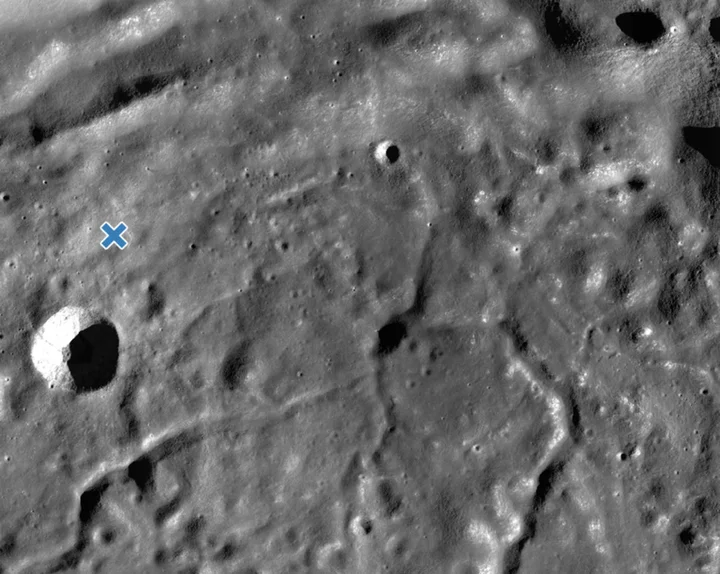
Japan’s Kishida to Seek Asset Management, Pension Fund Reform
Japanese Prime Minister Fumio Kishida will prod asset managers to improve their skills and strengthen governance, as he
2023-10-02 17:17

UK Electoral Registers Were Accessed by Hackers, Commission Says
The UK’s Electoral Commission was targeted by a cyber attack in which its servers containing email, control systems
2023-08-08 20:48

WhatsApp is testing an AI sticker generator
It seems as though everyone is rushing to use artificial intelligence to pimp their products,
2023-08-16 16:46

Medimaps Group Receives EU Certification Under the Medical Device Regulation
GENEVA--(BUSINESS WIRE)--Sep 4, 2023--
2023-09-04 21:29

Commentary: Why Artificial Intelligence Is Not So Scary. Carry On, OpenAI.
The biggest fear overhanging everything around AI seems to be the inchoate thought that maybe one day machines will become smarter than people and wipe out the human race.
2023-11-24 13:55

ExtraEmily eats uncooked chicken during Twitch stream, viewers warn her to stop
ExtraEmily, a Twitch streamer, horrified her followers when she was seen eating raw chicken
2023-05-17 15:54

Macron Concerns Derail EU-South America Trade Deal Yet Again
A major trade deal between the European Union and South American economies received a serious setback after French
2023-12-03 00:29

Judge Dismisses Republicans' Lawsuit Against Google Over Gmail Spam
A federal judge has dismissed the Republican National Committee’s lawsuit against Google, which claimed the
2023-08-27 23:26

‘Is AI dangerous?’ UK’s most Googled questions about artificial intelligence
People in the UK want to know how artificial intelligence works, how to use it to make money and whether it will take their jobs, according to Google. The search engine company revealed the UK’s most googled questions about AI over the past three months ahead of Rishi Sunak’s AI summit. Here, PA takes a look at some of the burning questions the UK wants the answers to. What is AI? In a nutshell, AI refers to the training of machines to solve problems and make decisions in a way that is similar to how the human brain works. However, to boil AI down to a short definition would be to underestimate its complexity and variations. For example, “weak” or “narrow” AI is AI trained to perform specific tasks and enables technology people may be familiar with in their home, such as Amazon’s Alexa or autonomous vehicles, while “strong AI”, comprised of Artificial General Intelligence and Artificial Super Intelligence, refers to AI where a machine would have an intelligence equal to or surpassing humans. What is generative AI? Generative AI refers to models which can create something completely new based on the vast data they have been trained on. Recent examples of this include ChatGPT, where users can make requests such as “write a poem that features the Battle of Waterloo”. ChatGPT would then produce a new poem based on the material it had been trained on, in this case vast quantities of history books and poetry. How to make AI song covers? Much like the production of a new poem using AI, it is possible to create new music using models which have been trained on previously recorded sounds. However, this is proving tricky ground for human musicians who fear their work may be used without their consent to produce brand new creations, or even to imitate them. Spotify boss Daniel Ek told the BBC he thought there were legitimate use cases for the technology in music, but that it should not be used to impersonate real artists without their consent. He said there were three “buckets” of AI use in music: tools such as auto-tune, which he said was acceptable; software which impersonated artists, which was not; and a more controversial middle ground where AI-generated music was inspired by a specific artist but did not directly mimic them. How to make money with AI? The possibilities for making money using AI are seemingly endless, with people using it to produce music, books, essays, translations and much more. AI can also be used to streamline processes in existing jobs, producing presentations or documents in a fraction of the time it would usually take. However, the issue of copyright looms large over AI’s creative uses. Who created AI? While the concept has been discussed in art and culture for centuries, the 20th century will be remembered as the period when AI began to take practical shape. In 1950, wartime codebreaker Alan Turing published a paper called Computing Machinery and Intelligence in which he considered whether machines could think, introducing what became known as the Turing Test where a human would attempt to distinguish between the responses of another human and a computer. Six years later computer scientist John McCarthy coined the term “artificial intelligence” during the inaugural AI conference at Dartmouth College, while in the same year the first running AI software programme was created by Allen Newell, JC Shaw and Herbert Simon. Is AI dangerous? Tesla, SpaceX and X owner Elon Musk told the PA news agency at the UK’s AI Safety Summit: “I think AI is one of the biggest threats (to humans). “We have for the first time the situation where we have something that is going to be far smarter than the smartest human. “We’re not stronger or faster than other creatures, but we are more intelligent, and here we are for the first time, really in human history, with something that is going to be far more intelligent than us. “It’s not clear to me if we can control such a thing, but I think we can aspire to guide it in a direction that’s beneficial to humanity.” Will AI take my job? As with all technological advances, AI will change the way we work, making some jobs redundant but creating others too. Rishi Sunak recently attempted to assuage people’s fears, saying: “It’s important to recognise that AI doesn’t just automate and take people’s jobs. “A better way to think about it is as a co-pilot. “As with all technologies, they change our labour market, I think over time of course they make our economy more prosperous, more productive. “They create more growth overall but it does mean that there are changes in the labour market.” Read More Big tech poses ‘existential threat’ to UK journalism, survey of editors finds King warns of urgent need to ‘combat significant risks of powerful AI’ Kamala Harris arrives in the UK ahead of AI safety summit Study finds ‘deepfakes’ from Ukraine war undermining trust in conflict footage More than 500 potential cyber attacks logged every second, BT says AI being used to create child abuse imagery, watchdog warns
2023-11-02 11:16

Elon Musk Says He’s Stepping Down as Twitter’s CEO
Elon Musk said he will step down from the top job at Twitter and become its executive chair
2023-05-12 05:54

6 different 'Spider-Man' movies are hitting Disney+ this spring — here are the best ways to watch
Six different 'Spider-Man' films are coming to Disney+. Here are the best ways to watch.
2023-05-09 17:59

Meta Ireland to cut about 490 jobs
Facebook owner Meta is to make approximately 490 full-time employees redundant across its Irish operations. The roles are being cut from a number of teams including finance, sales, marketing, analytics, operations and engineering. Employees at Meta Ireland were notified on Wednesday they were potentially impacted by a global restructuring which was announced by CEO Mark Zuckerberg earlier this year. In March, Meta revealed it plans to cut about 10,000 jobs globally, just four months after it axed 11,000 workers. The company said it will comply with Irish legal requirements in relation to redundancy timelines and processes. Meta, which is also the parent company of Instagram and WhatsApp, said the decision does not impact its “commitment to Ireland”, adding it will continue to be the international headquarters and base for several important company functions. The final number of redundancies will be determined by a collective consultation processes.
2023-05-24 22:23
You Might Like...

TikTok is launching its own book awards

MrBeast leaves bizarre reply to Elon Musk's post about 'mind-blowing' reach of X, puzzled fans ask 'said what'

Delta Air says its entire in-service fleet now 5G-compliant

PewDiePie banned on Twitch despite not even streaming

Twitter rival Bluesky halts sign-ups after huge surge in demand following Musk’s rate limits

NASA caught private moon lander crash on camera

How to post on Instagram from your desktop

Meta Rejects Trudeau’s Olive Branch in Canada Online News Feud
